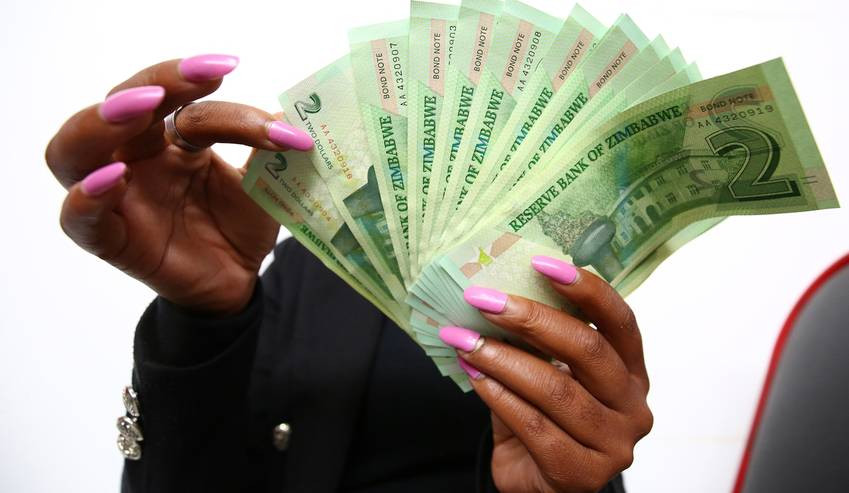
THE million-dollar question that almost any economic agent is grappling with in Zimbabwe at the moment is which legal tender will be in usepost-December 2025?
This scotoma has made it very difficult for financial institutions and other institutional investors to extend patient capital and otherlong-term credit facilities.
Subsequently, this has put pressure on the cost of funding and made it almost impossible for other capital-intensive private projects to be undertaken.
To give a bit of background and perspective, the S.I. 133 of 2019 officially brought to an end the multi-currency regime, which had allowed the Zimbabwean economy to transact with the USD and had been running for a decade.
This made the Zimbabwean dollar, called RTGS dollar by then, the sole legal tender in the country. Fast-forward, Covid-19 hit and the monetary authorities allowed the use of foreign currency to alleviate the effects of the pandemic.
In June 2022, through S.I. 118A the multi-currency returned, allowing transactions in foreign currency but with a condition that it will be operational up to the end of the National Development Strategy (NDS1) in 2025.
Over this time the Zimbabwe dollar (Zimdollar) has been vulnerable to all the evils of inflation and has shed over 99% of its value since it was reintroduced.
If you base your conclusion purely on facts and numbers released by authorities, you would agree that it has become less and less preferred legal tender, and over three-quarters of transactions are now concluded in the greenback if you ask Zimbabwe National Statistics Agency (Zimstat).
- RBZ blocks Harare US dollar charges
- Industry cries foul over new export surrender requirements
- One stitch in time saves nine
- Banks keep NPLs in safe territory
Keep Reading
According to the Reserve Bank of Zimbabwe (RBZ)’s Mid-Term Monetary Policy Statement (MPS), foreign currency deposits constituted 81,51% of the total money supply as of June 2023.
This means that for every dollar deposited in the banks, 82 cents of that is in foreign currency. Of course, there can be arguments about whether the exchange rate used correctly captures the value but rest assured foreign currency in the banking sector constitutes the bulk of deposits.
Due to the high cost of borrowing in local currency, economic agents have found themselves borrowing and lending in foreign currency.
The policy rate, which is the minimum interest rate that banks lend at is set at 150% and the Medium-term Bank Accommodation (MBA), which accommodates mainly the production sector is at 75% versus foreign currency annual interest rates between 12-15%.
The same MPS also tells us that the foreign currency loans to foreign currency deposits ratio was 60%, which explains the appetite for currency denominated financial products.
Although the Victoria Falls Stock Exchange (VFEX) is not yet liquid, there is enough evidence from the counters that have migrated that they prefer to report and trade purely in foreign currency.
Even after some of the incentives such as 100% of retention for exports had been scrapped, we continued to witness companies migrating to the VFEX.
The Intermediate Monetary Transfer Tax (IMTT), which was introduced in 2018 and targeted the informal and untaxed economy was mainly a tax on local currency.
At its peak contributed 11% to the fiscus but the contribution has been falling significantly and now it’s under 7%. This is also a testament to how transactions in the local currency have diminished in this country. Even parastatals are now allowed to pay their employees part of their salaries in foreign currency, subject to availability.
All these facts get one asking the question, is the Zimdollar relevant anymore?
On the other hand, monetary authorities have shown their unwavering support and dedication to keep the Zimbabwean dollar alive.
This has been through a raft of measures after measures to stabilise the currency and the exchange rate.
“Partial liberalisation, liberalisation, willing-buyer willing-seller, and wholesale auction system”are some of the words and phrases that have become popular as the authorities try to keep local currency alive.
Over the period from the beginning of May to mid-June the Zimbabwean dollar was averaging a depreciation of twenty percent per week.
At the height of this exercise,the Ministry of Finance and Economic Development required payments of income tax popularly known in the business community through their final payment dates called Quarterly Payment Dates (QPDs) in local currency.
As if that was not enough, a list of pharmacies was circulated with threats of taking out their licences because they were pricing in Zimbabwean dollar terms at a margin above the allowable 10% above the official rate.
The intention of all this was to make the local currency scarce and for it to gain value. To some extent that was achieved as the official exchange rate on June 27 appreciated for the first time after over a year and the bull run went for five weeks after that.
However, the biggest question now becomes, is the Zimbabwean dollar now finally appreciating and stabilising or it is losing relevance?
- Hozheri is an investment analyst with an interest in sharing opinions on capital markets performance, the economy and international trade, among other areas. He holds a B. Com in Finance and is progressing well with the CFA programme. — 0784 707 653 and Rufaro Hozheri is his username for all social media platforms











